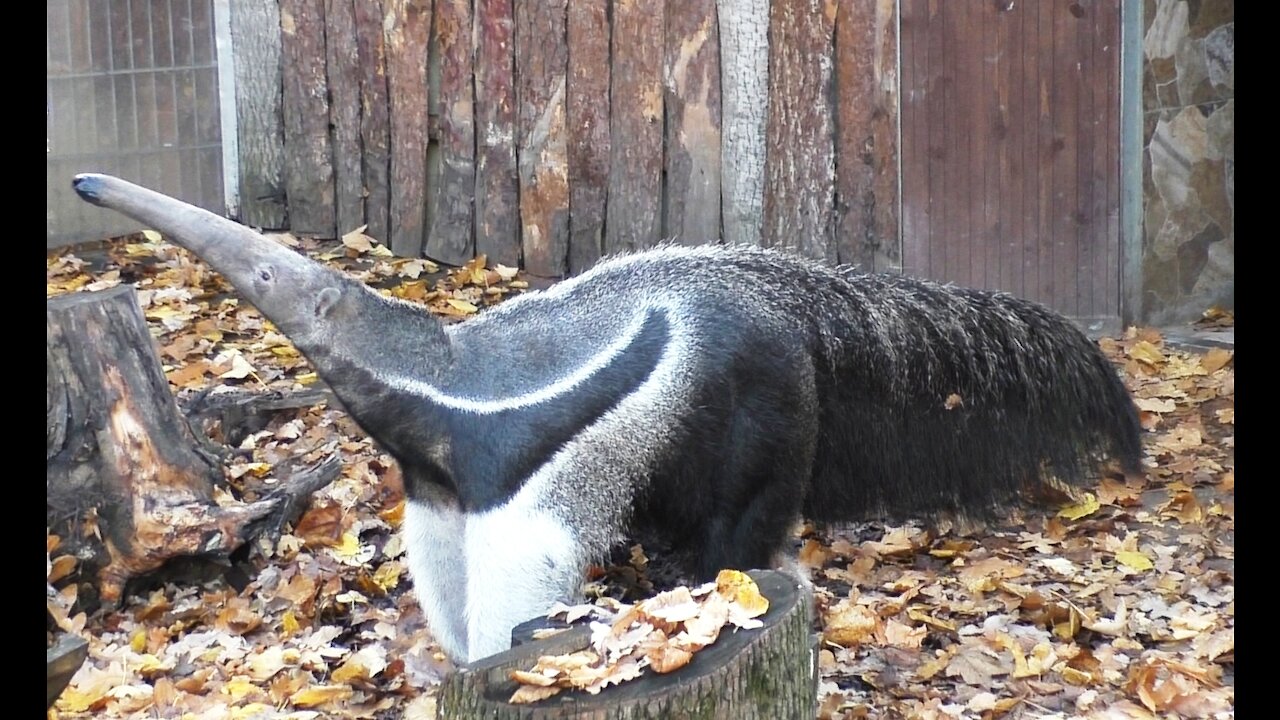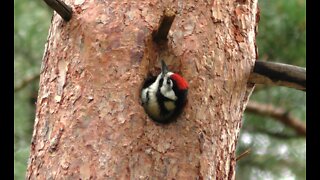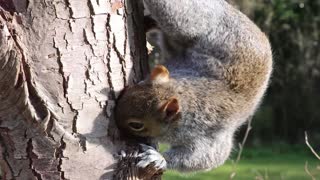Premium Only Content

Giant Anteater-getting to know the animal
The giant anteater leads a terrestrial lifestyle. This species is an excellent swimmer, able to navigate wide rivers. The anteater feeds on ants and termites. Destroying a termite or anthill with its claws, it begins to eat. The anteater throws out a 60-centimeter tongue moistened with sticky saliva at a rate of 160 times per minute, producing 30,000 insects per day. At the end of the XX century, it was found that anteaters can also eat the fruits of the palm tree, tearing the fruits with sharp claws, thus extracting moisture and vitamins for themselves. The baby anteater is born with its eyes closed, which open only after six days. Female anteaters carry a single cub on their back and do not part with it from birth until the next pregnancy. Due to the color similar to the mother, the baby anteater is almost invisible. Currently, the habitat of the giant anteater is Central and South America. The population of the giant anteater is constantly decreasing due to hunting and environmental changes. Giant anteaters are particularly vulnerable to fires because of their slowness and highly flammable fur. In 1994, about 340 giant anteaters died in forest fires in a national park in Brazil.Between 2000 and 2010, the total number of anteaters decreased by 30%. The giant anteater is listed in the International Union for Conservation of Nature and Natural Resources.
Subscribe to my channel, there are many interesting videos ahead of us:
https://rumble.com/c/c-336127
-
 0:48
0:48
World around us
3 years agoA young woodpecker is waiting for his parent
242 -
 1:47
1:47
myzoo
4 years ago $0.02 earnedWhat animal is that, you know this animal?
1584 -
 0:08
0:08
Khamsa
4 years ago $0.31 earnedStrange animal
9754 -
 0:12
0:12
Simo71
4 years ago $0.06 earnedCats animal
227 -
 0:25
0:25
Mmmmmm6
4 years agoAnimal life now 2
505 -
 0:20
0:20
Mmmmmm6
4 years agoAnimal life now
316 -
 0:15
0:15
Channel showing beautiful videos of animals
4 years ago $0.02 earnedBest Funny animal
1953 -
 LIVE
LIVE
Barry Cunningham
3 hours agoPRESIDENT TRUMP TOURS JEROME POWELL SCENE OF THE CRIME AT THE FEDERAL RESERVE
2,075 watching -
 LIVE
LIVE
Sarah Westall
2 hours agoBlackmail, Power & Corruption: The Currency of the Empire - Epstein & more w/ Joachim Hagopian
401 watching -
 16:33
16:33
Clownfish TV
7 hours agoLate Night TV Has NO FUTURE After Stephen Colbert's Cancellation!
7516